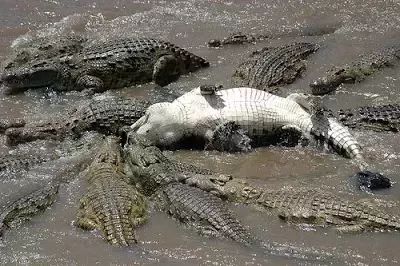
African Crocodiles have tongues, but they hardly move as they are fixed to the lower part of their jaw by a strong membrane. Because crocodiles spend so much time underwater, the tongue helps keep the throat closed, protecting the animal’s airway. Unlike other species, the tongue plays no part in feeding.
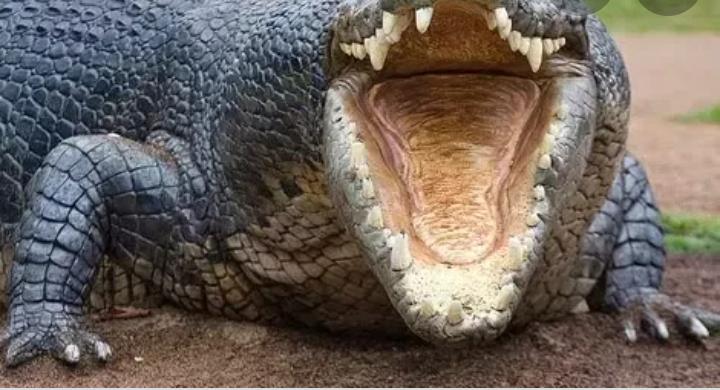
Crocodiles cannot bite off pieces of meat or chew that meat, so they do something called a ‘death roll’. This is when they bite into the meat and then roll over once or a few times to tear off chunks of meat and small enough to swallow whole.
African Crocodiles teeth are hollow inside and a new tooth grows inside to replace the old tooth. They constantly replace teeth and one croc. can replace teeth over 3, 000 times in their lifespan!
The Nile crocodiles in Chad are smaller than the cousins found in the rest of Africa.
— Chad crocodile — about 1.5 metres (5 feet)
— The usual Nile croc — about 5 metres (16 feet).
So, quite a large difference!
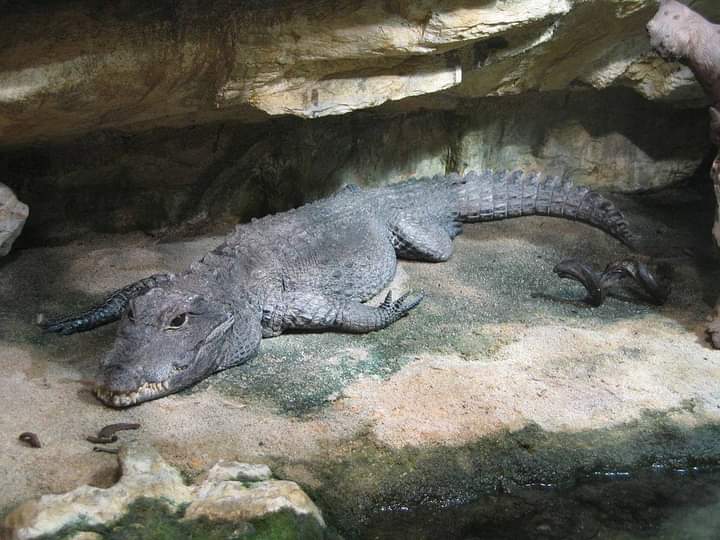
Africa has a variety of crocodiles. From the giants — like the Nile crocodile, to the smallest — the African dwarf crocodile with beautiful large eyes.
The African dwarf crocodile is a forest-living animal, and only inhabits a certain area — the Western half of Equitorial Africa — Benin, Burkina Faso, Cameroon, Cabo Verde, Chad, Côte d’Ivoire, Equatorial Guinea, The Gambia, Ghana, Guinea, Guinea-Bissau, Liberia, Mali, Mauritania, Niger, Nigeria, Senegal, Sierra Leone, and Togo.
These African crocodiles does not grow longer than 2 metres (6 1/2 feet).
They are Africa’s smallest crocodiles and in danger of extinction. It is classified as a vulnerable species.
African Crocodiles are interesting animals, and although they are cold-blooded show a warmth, tenderness and romance that we can relate to.
Mating usually takes place in water and near the surface.
Either sex can initiate courtship, and when the female is ready she lifts her snout out of the water — tipping her head upwards. They then nudge each other with their snouts, and then the male (can be up to twice her size) strokes her back with his forelegs. They both arch their backs by tipping their head up and (cutely) blow bubbles at each other. Then, the male moves with great tenderness and moves her into position and then mounts her. Once everything is ready they remain joined for 15 minutes.
Whoever thought they could be so gentle, add this to the fact the female guards her young, and when hatching will gently open the eggs to free them and tenderly scoops some into her mouth and carries them to their nursery in the water. Crocodiles show a much softer and caring side that they often never receive credit for.
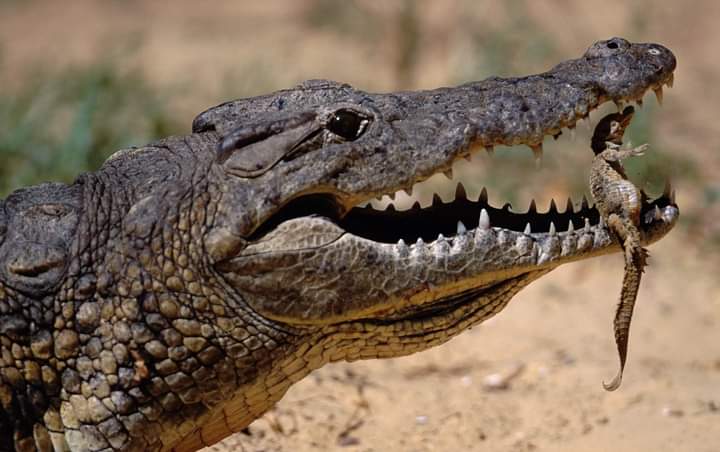
A mother crocodile has a pouch on the floor of her mouth. African Crocodiles have the strongest bite force of an animal — not including certain marine animals, but she also is very gentle when she carries some hatchlings between her teeth. Instinct prevents those powerful jaws from closing and crushing those fragile hatchlings. Nature is always showing just how amazing it can be!

Once the hatchlings of African crocodiles are in their nursery pool and catching insects — their mother keeps a watchful eye. Due to them being cold-blooded animals they need to warm up to move, and therefore, reptiles will bask in the sun — to absorb heat so that their body has energy to function. Hatchlings also need to do this, and often use their mother’s head to bask in the sun.

African Crocodiles are wonderfully complex animals and not just the unfeeling, cold reptile which we see. This animal shows great tenderness and it is beautifully shown on only one of these contradictory occasions.
When the babies are near hatching, they utter little chirping or piping sounds.
Even buried under a layer of sand and further confined to the eggshell, this sound carries for a few metres and the mother guarding her nest and lying near the site, hears them and quickly removes the sand and gently breaks open a few unbroken eggs — freeing her hatchlings and then tenderly picking up about 15-20 a time and takes them to the water.
The Nile Crocodile – African Crocodiles
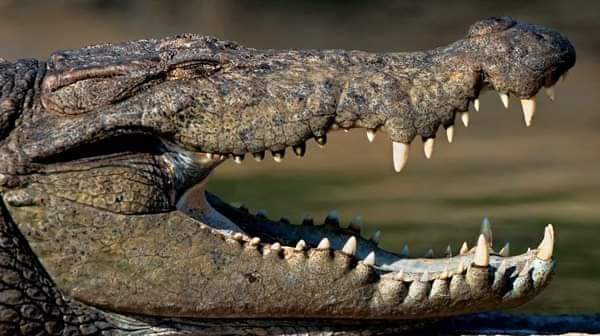
The Nile crocodile is Africa’s biggest reptile.
The largest crocodile can reach 6m long and weigh a tonne or more. Crocodiles can live to 100 years or more if not interrupted by human activities. Humans, tortoises and crocodiles have the longest life spans.
African Crocodiles’ mouths are not water tight. Adaptation has made them to have at the back of their mouths, a flap of skin known as palatal valve that seals the back of the mouth to prevent water, air and food from entering the stomach and lungs when under the water. This simply tells us that crocodiles cannot feed while under water hence we always see them with their heads up, tossing food over the water surface when feeding.
They enjoy basking in the sun during the day because they are ectothermic and assume the temperatures in their surroundings. They normally open their mouths while basking in the sun to regulate their body temperature (thermo – regulation).
These creatures can slow their heartbeat to 3 beats/minute as a way of controlling their oxygen consumption when submerged under water. While under water, only core body parts are supplied with oxygen and blood is only directed where it’s needed and is stopped from flowing to non-essential parts at that time. This helps them to stay submerged for a long time.
African Crocodiles can survive for months without food but on fats and nutrient reserves stored in their tails. They dig themselves in dry mud or dig tunnels on sandbanks to prevent overheating and moisture loss.
They have lingual salt glands on their tongues that purge the body excess salts and this allows them to live well in salt water.

African crocodiles releases extra body heat this way. Second answer: Its tongue has salt glands, and this is how they get rid of the extra salt in their body – this is why they can live in salty water, even the freshwater crocodiles.
Alligators do not have this feature — they do have them (salt glands) on their tongue — but they do not work, this is why you only find them in freshwater. They cannot survive in salt water.

